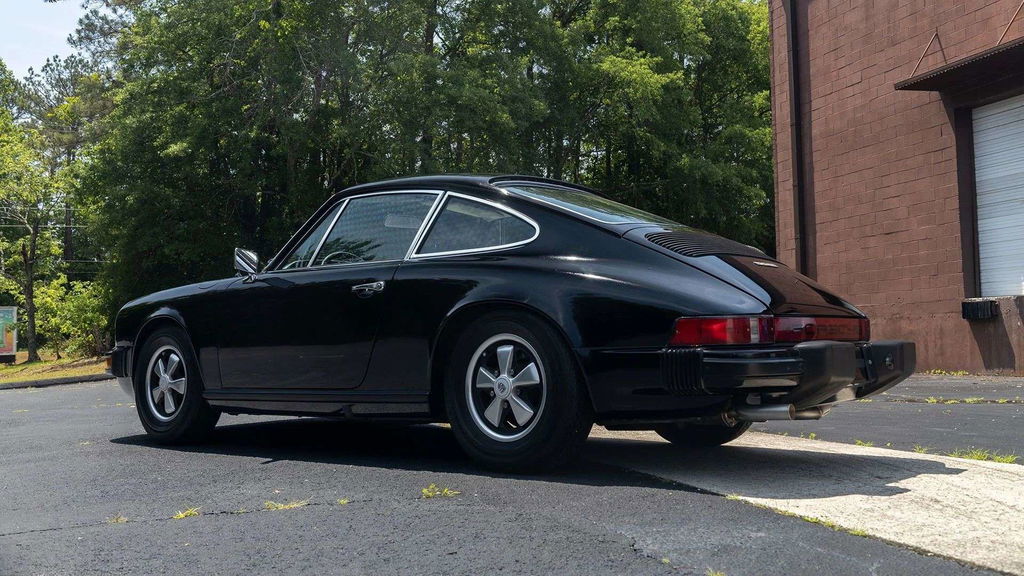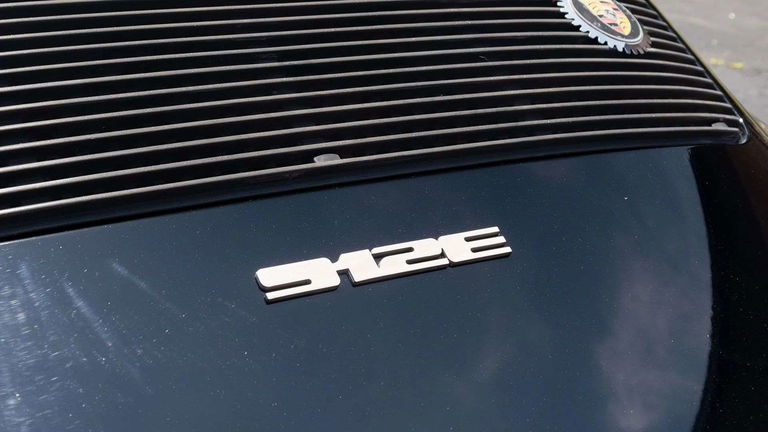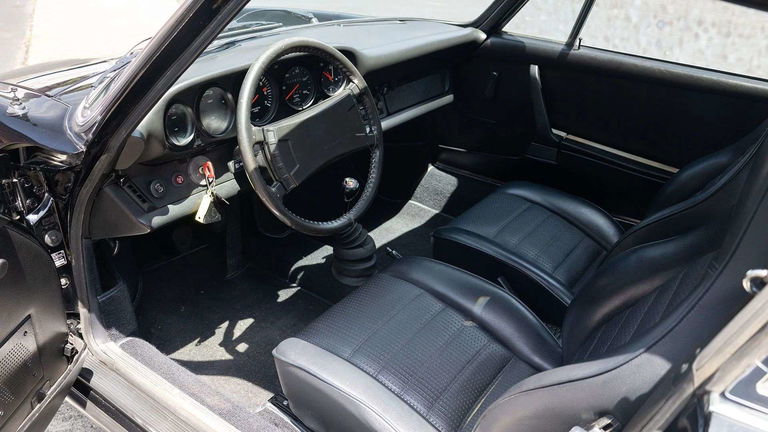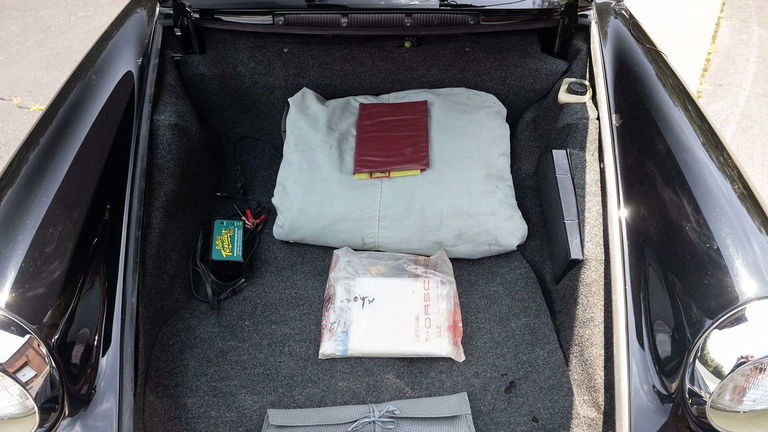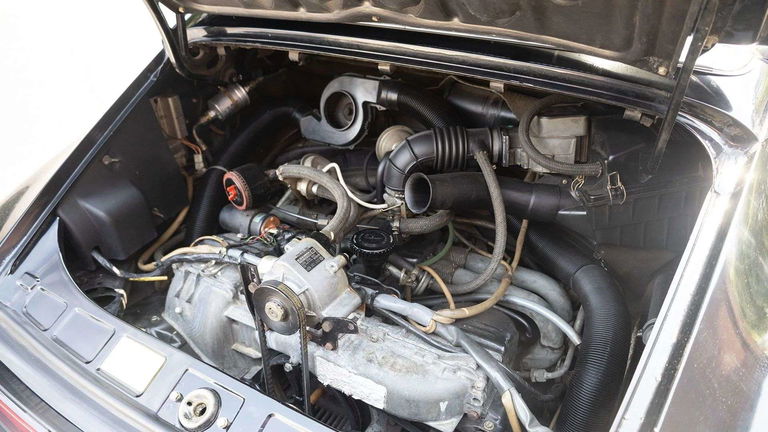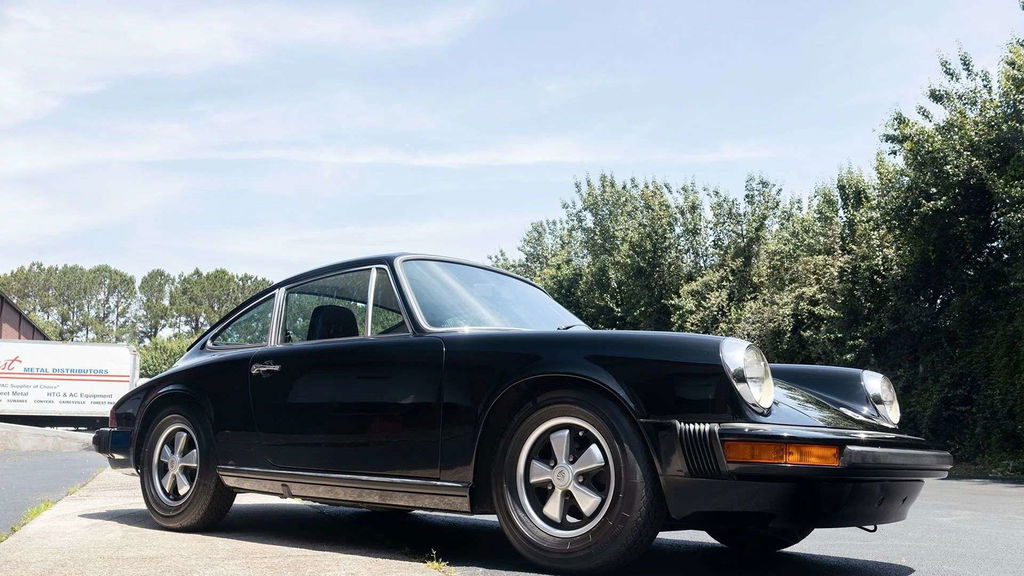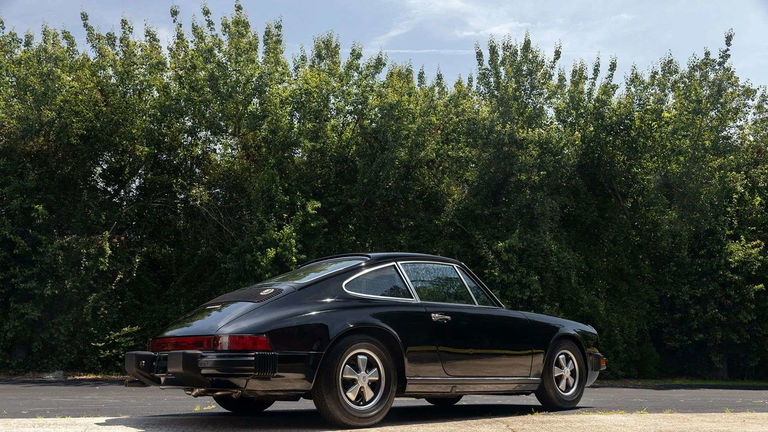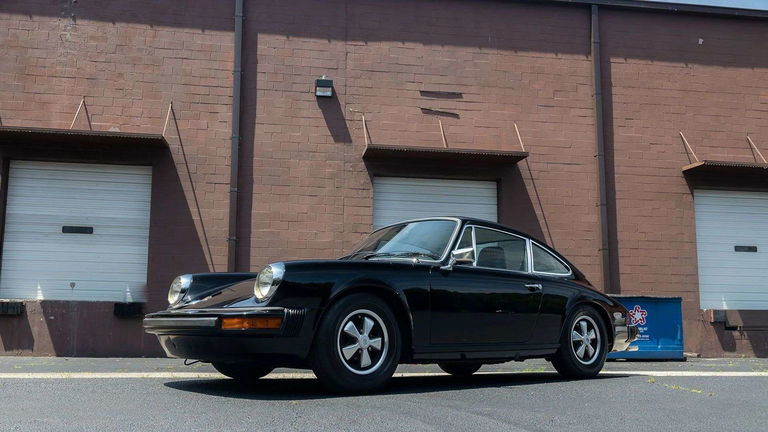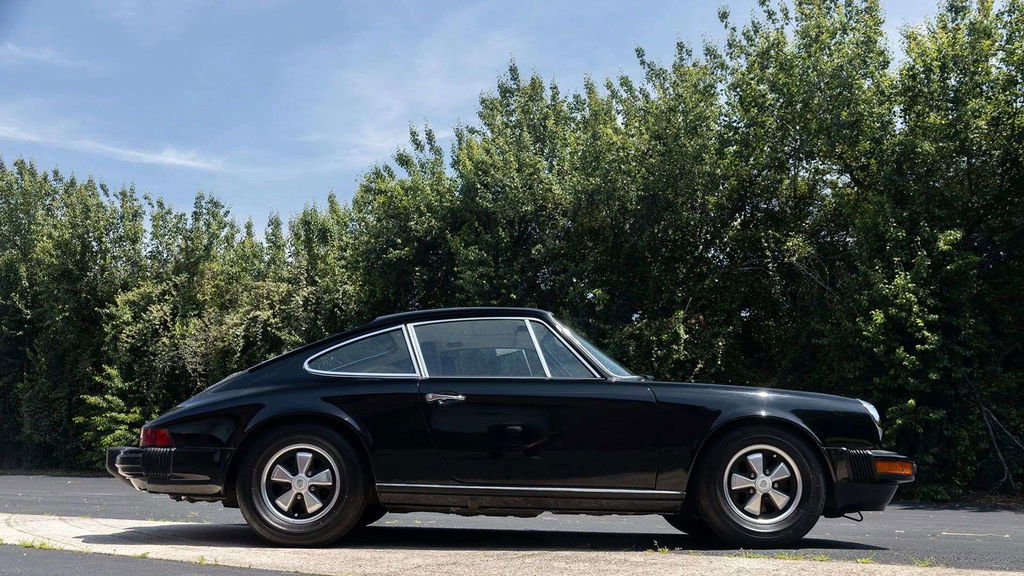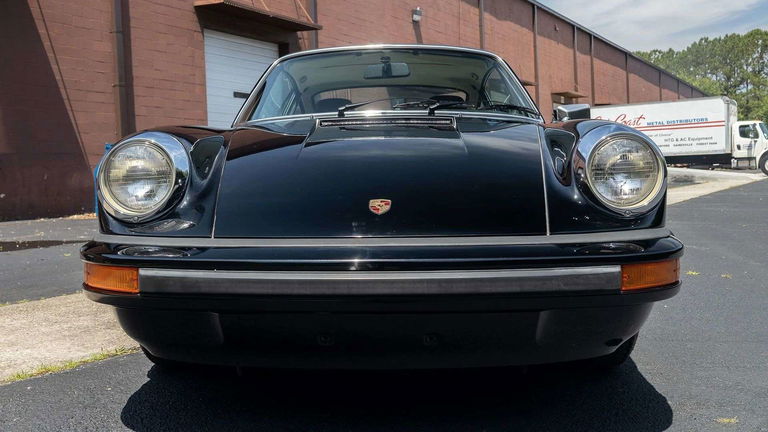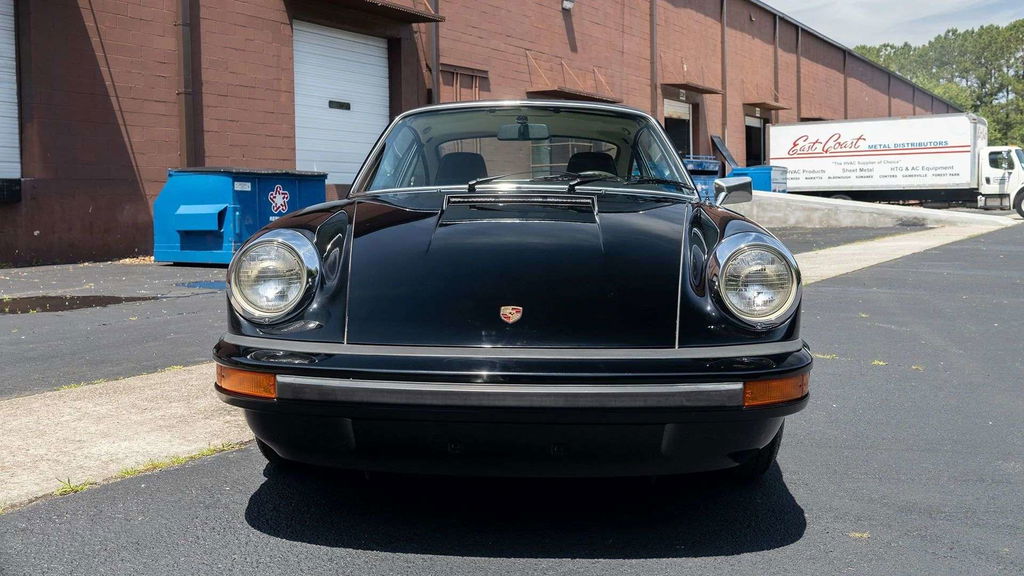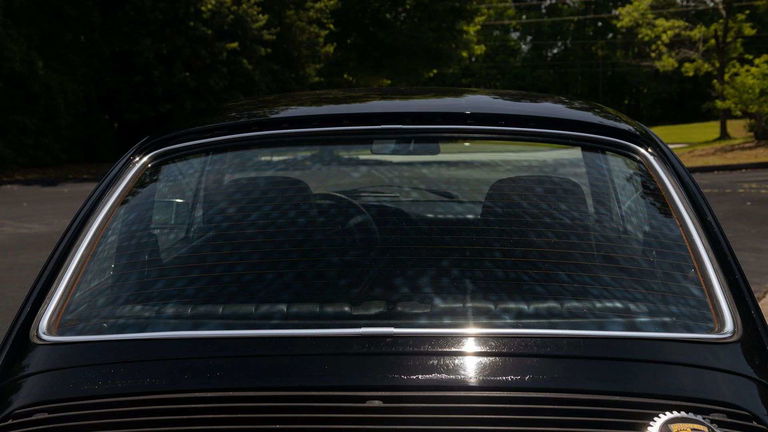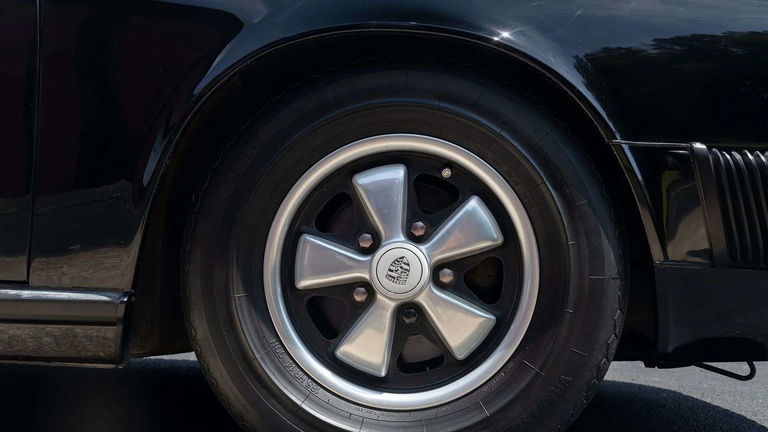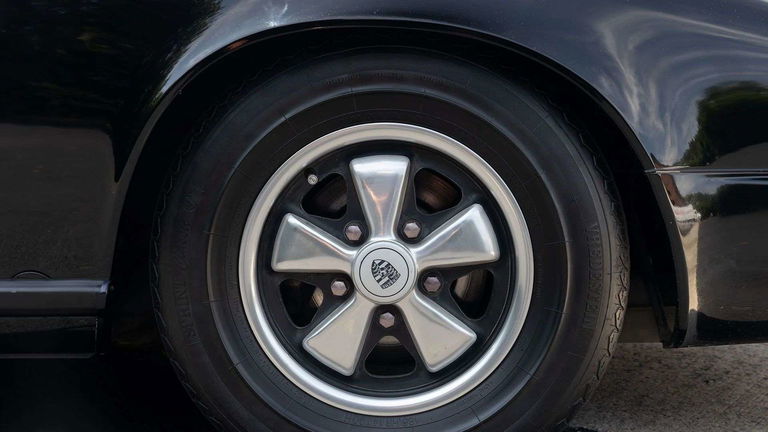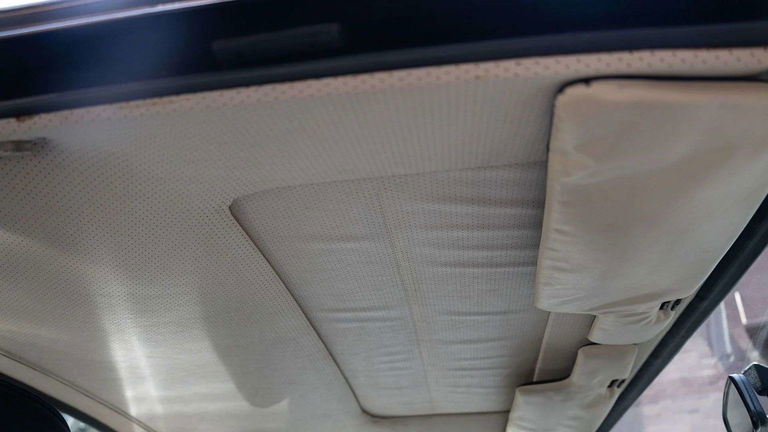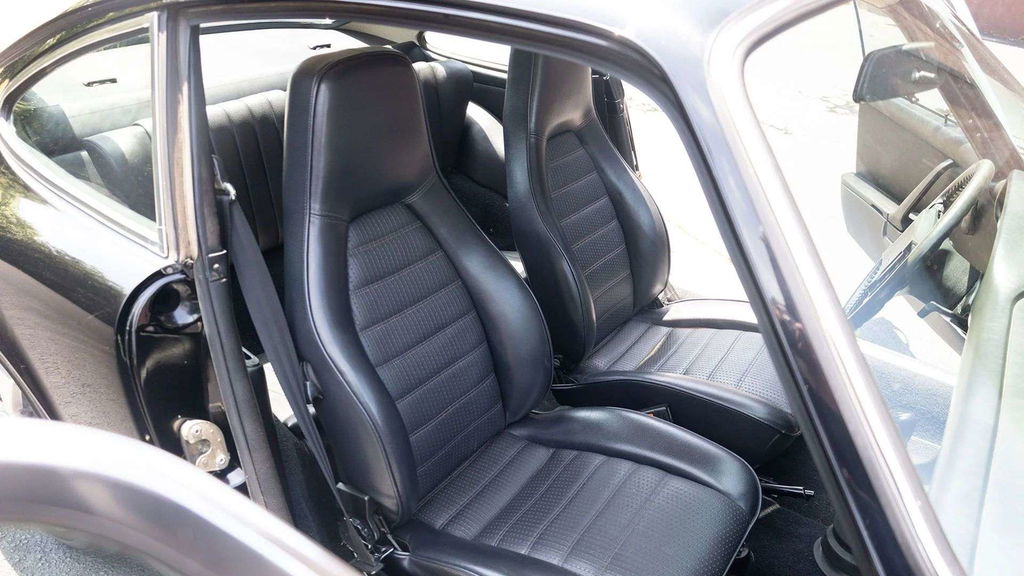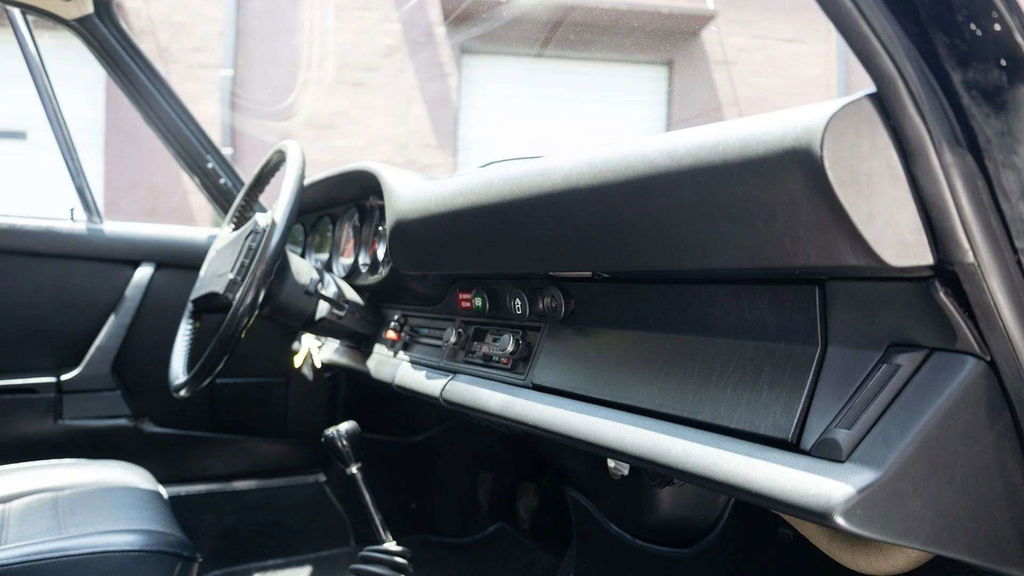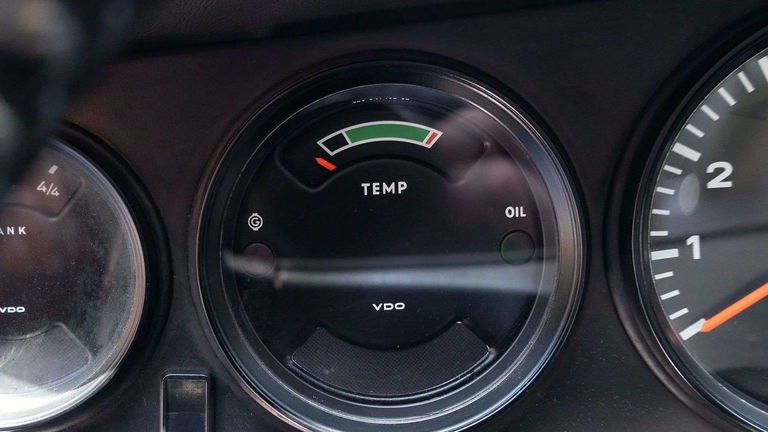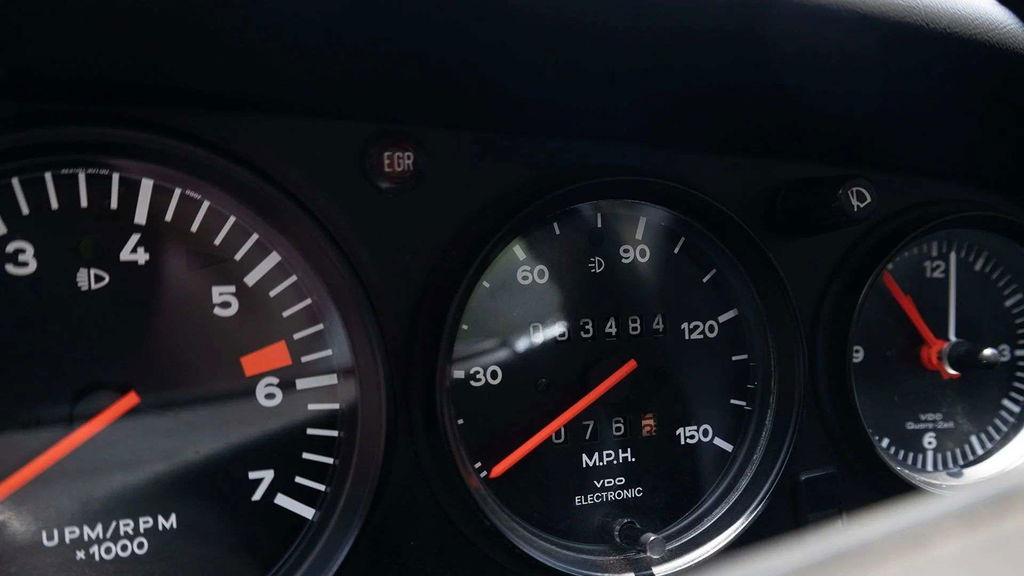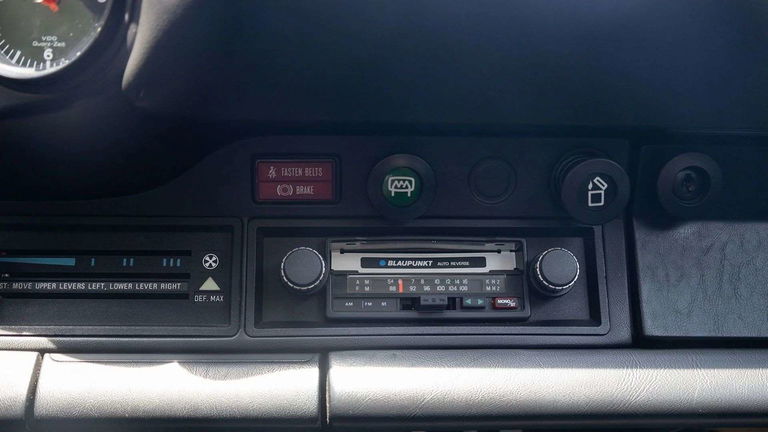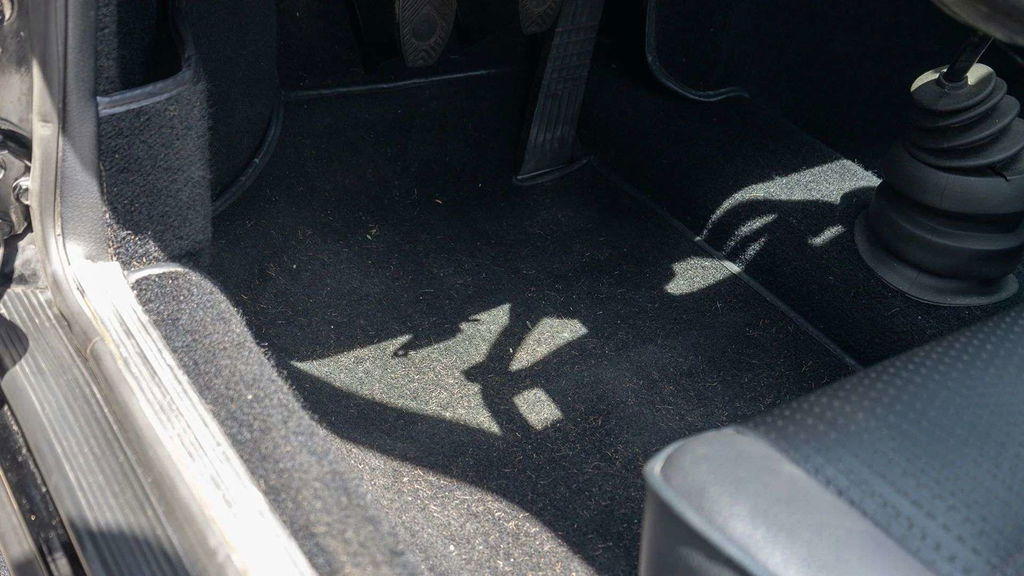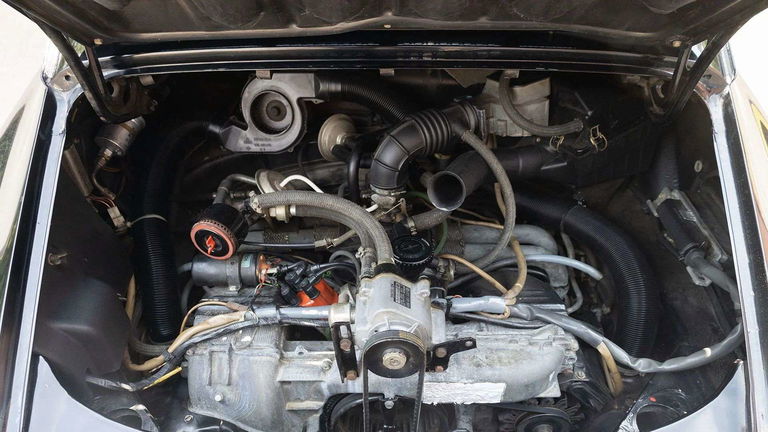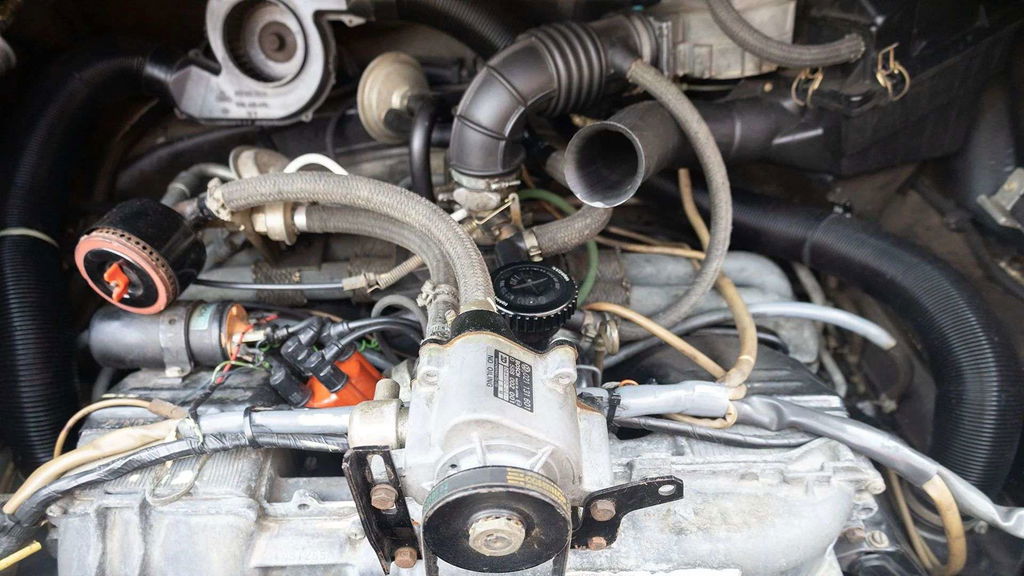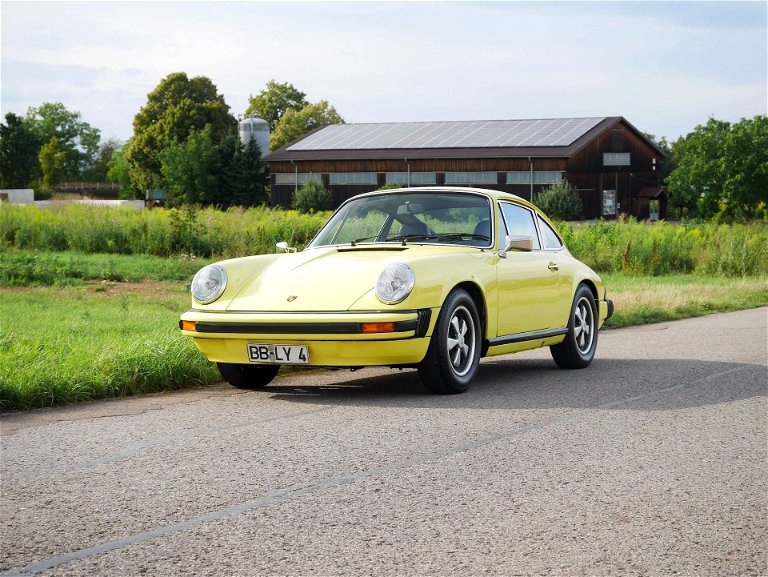This 912 E was sold new in California, is understood to still wear its original coat of Black paint as per the consignor, and was desirably optioned with a matching black interior in addition to a sunroof. After being placed in storage for several years, the consignor reports it was taken to Porsche San Diego for rejuvenation in 2019 while displaying only 63,353 miles (which are believed to be original to this car) for a total of $6,379. More recently, reported servicing was conducted in December 2021 at Chris’s German Auto Service of Redmond, Washington at 63,478 miles.
While there, the suspension was overhauled, valves adjusted, the fuel system overhauled, and a new Bursch sport exhaust was fitted, amongst other tasks, for a total of $14,309. Today, this one-year-only 912 E is accompanied by its owner’s manual, selected service history, and tools.
Porsche found itself in a predicament in 1975 when planning their 1976 model year lineup. With the mid-engined 914 production concluding in 1975 and its replacement, the 924, still in development, Porsche could not afford to lose selling a popular, affordable model. Short on time, the quick-thinking engineers harkened back to Porsche’s genesis and paired a four-cylinder engine with the recently introduced G-series 911 chassis. Dubbed the 912 E, with the E standing for Einspritzer (German for fuel injection) Porsche created a one-hit-wonder, selling over 2,000 of their new 912 E in 1976.
Naturally, the 912 nameplate was previously used from 1965 until 1969, but the 1976 model featured numerous upgrades over its predecessor. The newer chassis was based on the 2.7-liter 911, with only keen observers able to tell the two apart. Smartly, the 2.0-liter engine was the same as those used in the 914, and with added Bosch L-Jetronic fuel injection, horsepower increased to 90 with a commensurate increase in top speed to 115 mph. The automotive press, both then and now, have boasted about their remarkable similarities to their six-cylinder brethren, with reasonable power, better handling, and lower overall running costs.


